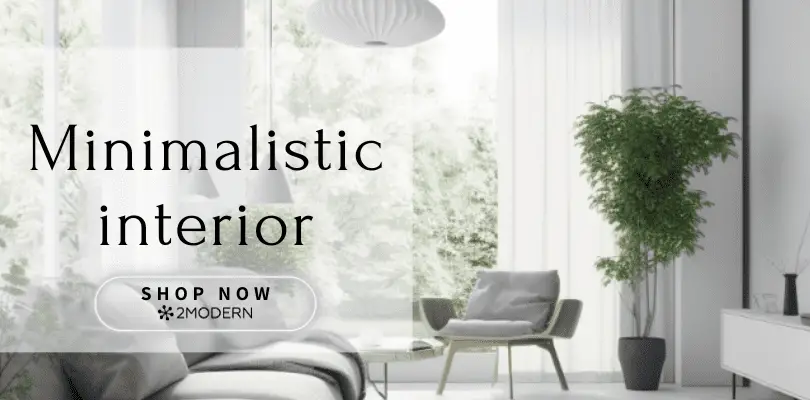
Hey there, are you feeling overwhelmed by the clutter in your home? Do you long for a space that is calm and soothing? Well, have you considered the magic of minimalistic interior design?
What is Minimalistic Interior Design?
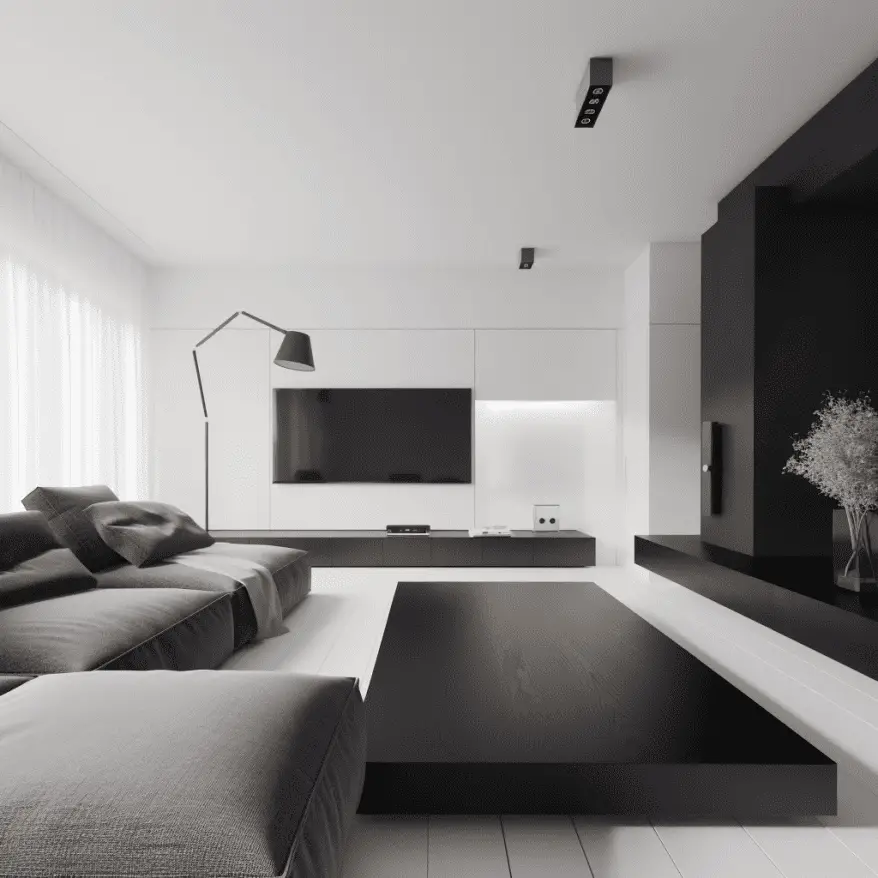
Minimalistic interior design is all about simplicity, functionality, and clean lines. It’s a design style that focuses on the essentials and leaves out the unnecessary fluff. The result is a space that is not only aesthetically pleasing but also calming.
History of Minimalistic Interior Design
Minimalistic interior design has been a prominent design style for over a century, which is truly remarkable! It has progressed significantly since its inception and has taken on a life of its own.
Mies van der Rohe’s work was truly revolutionary, and it’s not difficult to see how his uncluttered designs and clean lines inspired a generation of designers. It has persisted in popularity for so long because of its agelessness and versatility.
The artistry of Donald Judd and Dan Flavin in the 1960s was instrumental in bringing minimalistic design into the mainstream. It’s truly remarkable how an art movement influenced how we decorate our homes today.
It’s fascinating to observe that this interior design style gained traction in Japan during the 1980s and 1990s. Japan’s minimalistic approach to design is well-known, so it’s unsurprising that the style took off there.
Even today, this design approach continues to be a favored option for those who desire a sleek, contemporary appearance in their homes. It’s a design style that can be effortlessly achieved and works well with a range of materials and color palettes.
Key Principles of Minimalistic Interior Design
So, what are the key principles of minimalistic interior design?
Firstly, it’s all about “less is more.” This means that you should declutter your space and focus on a few statement pieces that add character and personality to your home.
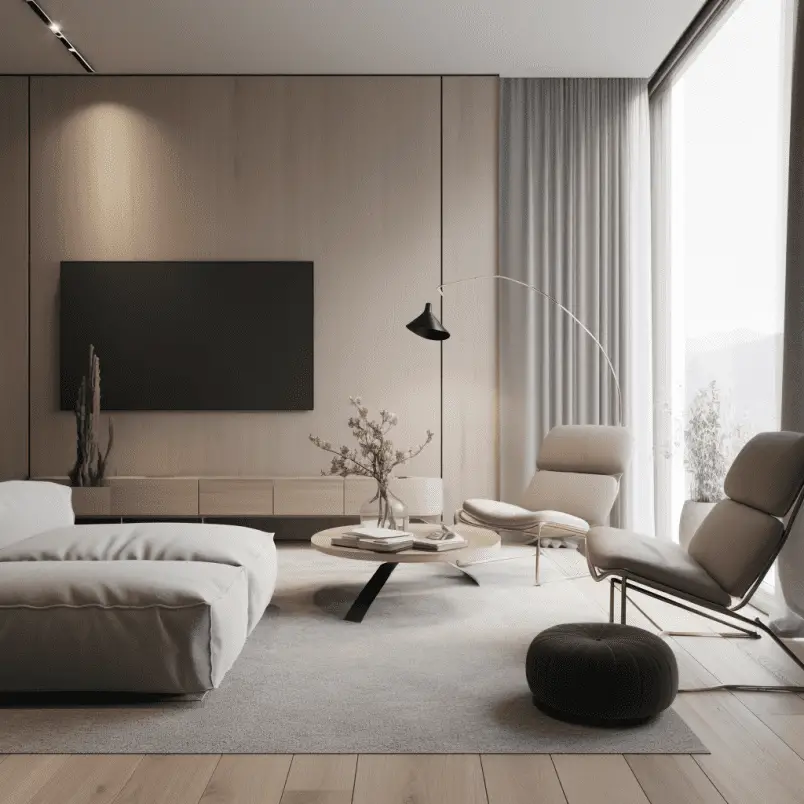
Functionality is key. Every item in your home should serve a purpose, and every space should have a function.
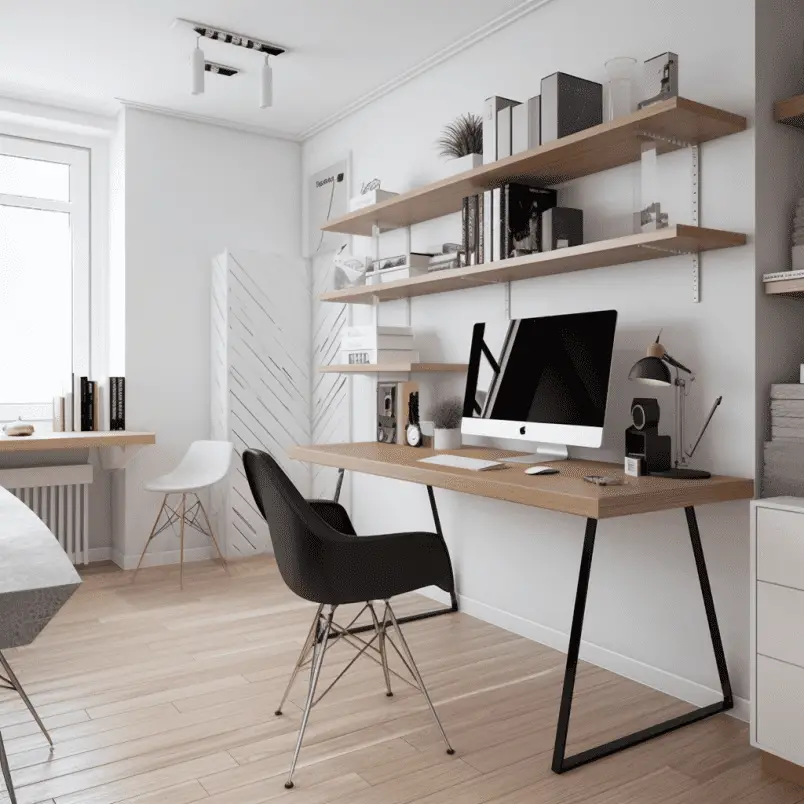
Clean lines and simple shapes are the hallmark of minimalistic rooms. Furniture and decor should be streamlined and devoid of ornate details.
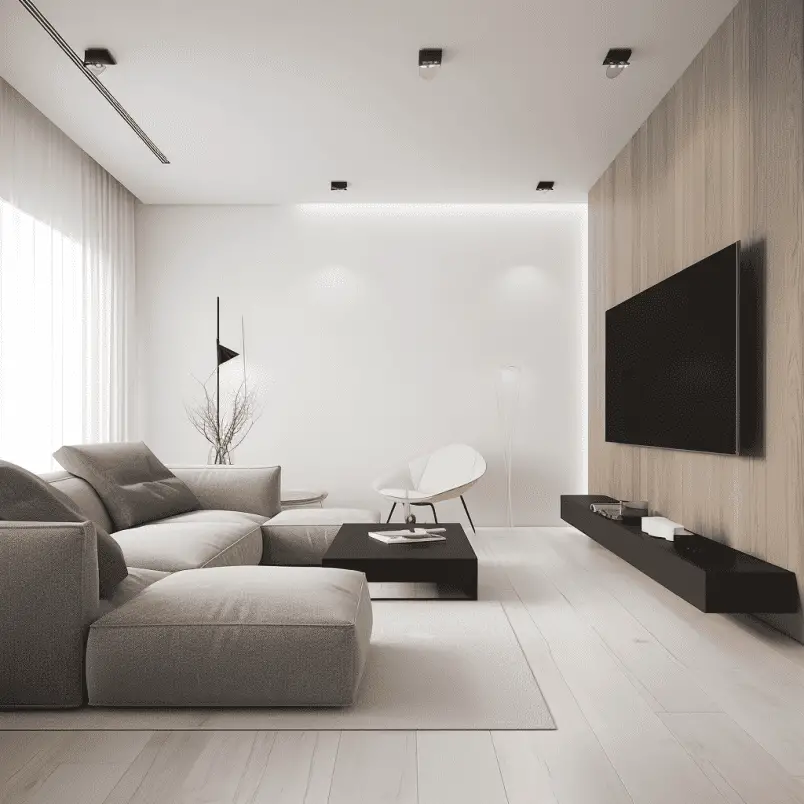
Neutral color palette is essential. Whites, grays, and blacks are commonly used to create a clean, uncluttered look.
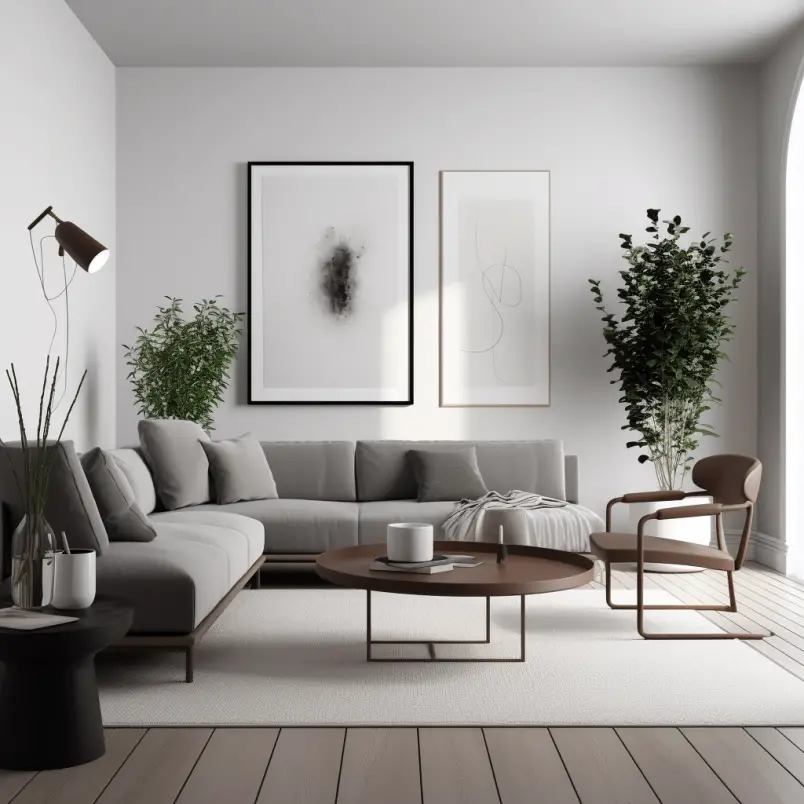
How to Achieve Minimalistic Interior Design in Your Home
Now, how can you achieve this minimalistic look in your home?
Firstly, declutter and simplify your space. This will help create a clean, uncluttered look. Secondly, choose a neutral color palette to create a calming ambiance. Thirdly, focus on functionality when selecting furniture and decor. Choose pieces that serve a purpose and are comfortable to use. Fourthly, add a few statement pieces to give your space character and personality. And lastly, use natural materials such as wood, stone, and leather to create warmth and texture.
Minimalistic Interior Design in Different Rooms
Minimalistic interior design focuses on simplicity, functionality, and clean lines. This design style can be applied to various rooms in your home, creating a serene and clutter-free environment. Here’s a breakdown of how to incorporate minimalistic design elements into different spaces.
Living Room
In a minimalist living room, focus on keeping the space open and clutter-free. Choose furniture with clean lines and neutral colors, and limit the number of pieces to only what’s necessary. Keep the walls free of excessive decor, opting for one or two statement pieces instead. Add a touch of warmth with a simple rug, potted plants, or a cozy throw.

Kitchen
A minimalist kitchen is both functional and visually appealing. Opt for streamlined cabinetry with minimal hardware and sleek countertops. Incorporate built-in appliances and storage solutions to maintain a clutter-free workspace. Choose a simple color palette, such as white or gray, and add visual interest with subtle textures or materials like stainless steel or concrete.
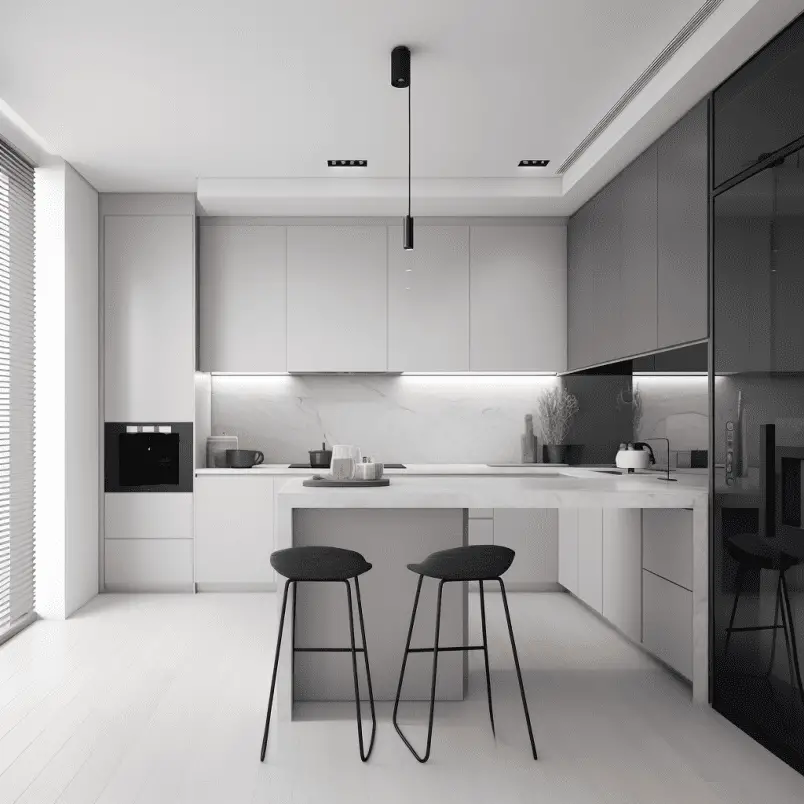
Dining Room
A minimalist dining room should be free of unnecessary items and distractions. Select a simple, modern dining table with clean lines and a limited number of chairs. Avoid overly ornate centerpieces, and instead choose a single, statement-making piece like a large vase with a few branches or a sculptural fruit bowl.

Bedroom
Create a peaceful and restful atmosphere in your minimalist bedroom by selecting a simple bed frame and monoch

How Minimalistic Interior design compares to Other Styles
Compared to traditional interior design styles, this design offers simplicity, elegance, and sophistication. Unlike traditional styles that incorporate bold and vibrant colors, minimalistic interior design uses a neutral color palette that creates a calming and serene atmosphere. This design style is all about using the bare essentials to create a functional and comfortable living space.
It also focuses on the use of natural light and open spaces, which creates an illusion of a larger living area. This design style avoids clutter and unnecessary decor items, making your living space look clean, organized, and inviting.
When compared to other modern interior design styles like industrial and contemporary, minimalistic interior design stands out for its timelessness. Unlike these styles that can become outdated quickly, minimalistic interior design is a classic and versatile style that will remain relevant for years to come.
Benefits of Minimalistic Interior Design
The benefits of minimalistic interior design are numerous. It creates a calming and relaxing space that is free from clutter and chaos, helping to reduce stress and create a peaceful environment. Additionally, it can help you make the most of your space, especially if you live in a small apartment or have limited square footage. And the best part? It’s much easier to clean and maintain!
So, if you’re looking for a design style that promotes simplicity, functionality, and clean lines, minimalistic interior design is the way to go. And don’t worry, it’s not just for modern homes. It can work in any type of home, and you can still incorporate personal items and decor that reflect your personality and style. Plus, it doesn’t have to be expensive. You can achieve this style on a budget by focusing on simplicity and functionality.
Conclusion
In summary, minimalistic interior design is a timeless design style that is both beautiful and eco-friendly. It’s all about creating a space that is both aesthetically pleasing and calming, and it’s worth considering for your home. So why not give it a try and see how it can transform your space into a peaceful oasis?
FAQ
1. Is minimalistic interior design only for modern homes?
No, minimalistic interior design can work in any type of home. The principles of simplicity, functionality, and clean lines can be applied to any style of architecture.
2. Can I still have personal items in a minimalistic interior design?
Yes, while minimalistic interior design emphasizes simplicity, it’s still important to incorporate personal items and decor that reflect your personality and style.
3. Is minimalistic interior design expensive?
Not necessarily. While high-end designer furniture and decor can be expensive, minimalistic interior design can also be achieved on a budget by focusing on simplicity and functionality.
4. Can minimalistic interior design be cozy and welcoming?
Absolutely! While this design emphasizes simplicity, it’s still possible to create a cozy and welcoming space by incorporating warm textures and materials.
5. Is minimalistic interior design a passing trend?
This design has been around for decades and is not a passing trend. It’s a timeless design style that focuses on simplicity and functionality, which are important qualities in any home.
